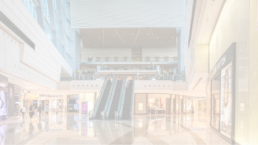Australian Shopfitting 101: How A Shopfitter Can Help Make The Best Use Of Store Space
Shopfitting plays a vital role in creating an inviting and functional retail environment. In Australia, shopfitting has become an essential aspect of retail design and construction. Shopfitters are professionals who specialize in maximizing store space and creating an appealing layout that attracts customers. This article is about the significance of shopfitting in the Australian retail industry and explores how shopfitters can help businesses make the best use of their store space.
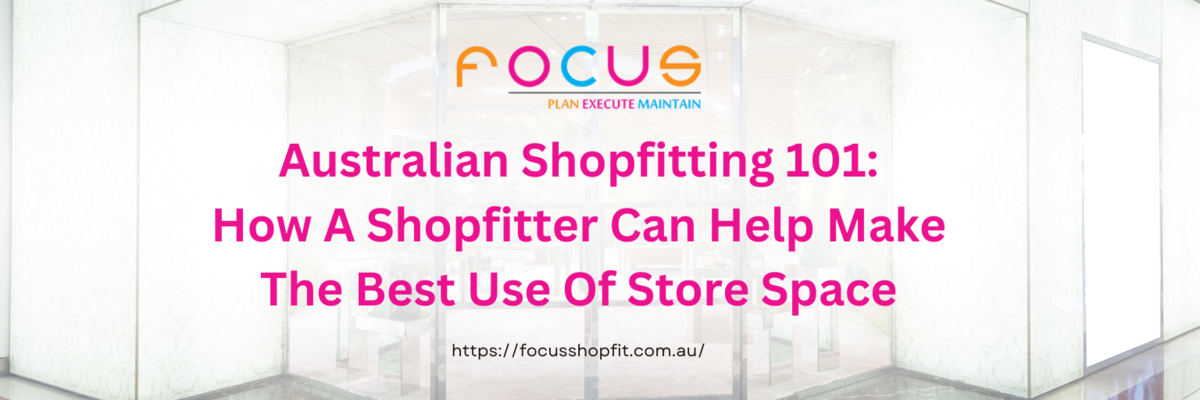
The role of a shopfitter in maximizing store space
A shopfitter's primary objective is to optimize store space efficiently. They possess the expertise to analyze the available area and develop innovative solutions to make the most of it. Shopfitters understand the psychology of consumer behavior and use this knowledge to create layouts that enhance the overall shopping experience. By integrating elements such as aisle width, product placement, and signage, shopfitters can guide customers through the store and strategically display merchandise, ultimately leading to increased sales.
Shopfitters also consider the flow of foot traffic within the store. They ensure that the layout is easy to navigate, with clearly defined pathways that direct customers towards high-demand areas. Efficient space utilization can result in improved customer satisfaction, increased dwell time, and ultimately, higher conversion rates.
Benefits of hiring a professional shopfitter
Hiring a professional shopfitter brings numerous benefits to retailers. Firstly, shopfitters have extensive knowledge and experience in the field. They stay updated with the latest industry trends, regulations, and materials, ensuring that the store design is contemporary and compliant. Retailers can leverage their expertise to create a visually appealing and functional space that aligns with their brand identity.
Additionally, shopfitters have access to a wide network of suppliers and contractors. They can source high-quality materials at competitive prices, providing retailers with cost-effective solutions. Moreover, shopfitters oversee the entire shopfitting process, coordinating with various tradespeople to ensure that the project is completed on time and within budget.
By hiring a professional shopfitter, retailers can save valuable time and resources while achieving optimal store space utilization.
Common challenges in store space utilization
Despite the importance of efficient store space utilization, retailers often face common challenges. Limited square footage, irregular store layouts, and existing architectural constraints can pose significant obstacles. It is crucial to address these challenges to maximize the potential of the available space.
A professional shopfitter can help overcome these challenges by conducting a thorough analysis of the store and developing tailored strategies. They can utilize innovative techniques to create a seamless flow, regardless of the store's shape or size. By optimizing shelving systems, utilizing vertical space, and incorporating modular fixtures, shopfitters can transform even the most challenging spaces into functional and visually appealing environments.
Shopfitting techniques to optimize store space
Shopfitters employ various techniques to optimize store space and create an efficient layout. One technique is the use of modular fixtures and flexible displays. These can be easily rearranged to accommodate changing product assortments and seasonal displays. By incorporating movable fixtures, shopfitters can adapt the store layout to meet evolving business needs.
Another effective technique is the implementation of vertical storage solutions. Utilizing vertical space not only maximizes store capacity but also enhances visual merchandising opportunities. Shopfitters can install high shelving units, mezzanines, or hanging systems to display merchandise effectively, making use of every available inch of space.
Additionally, shopfitters focus on creating effective aisle layouts. By strategically placing aisles and adjusting their width, shopfitters can control the flow of foot traffic and guide customers toward specific areas of the store. This technique ensures that no space is wasted and that customers have a seamless shopping experience.
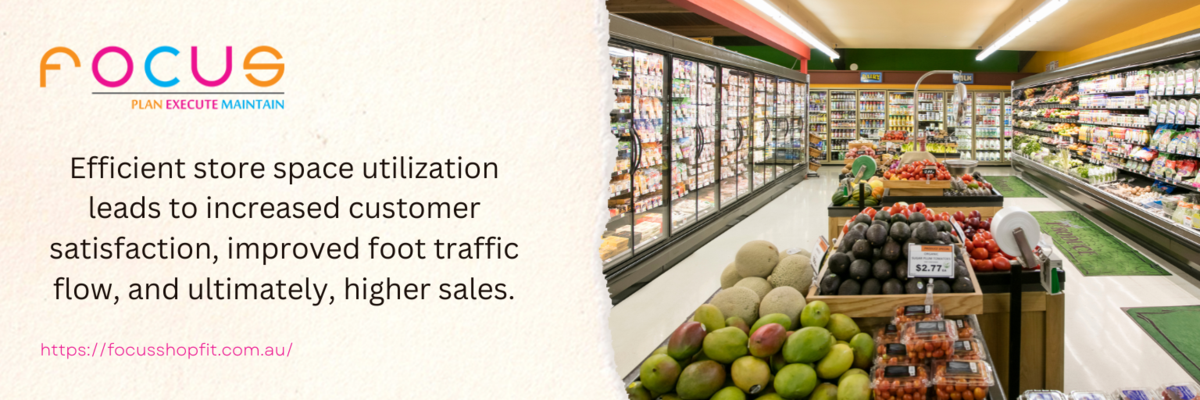
Factors to consider when choosing a shopfitter
When selecting a shopfitter, several factors should be taken into consideration. Firstly, it is essential to evaluate the shopfitter's experience and expertise in the retail industry. A shopfitter with a proven track record of successful projects and a deep understanding of store space optimization is more likely to deliver satisfactory results.
It is also crucial to assess the shopfitter's ability to understand and align with the retailer's brand identity. Effective communication and collaboration between the retailer and shopfitter are essential for creating a store environment that accurately represents the brand and appeals to the target audience.
Furthermore, it is recommended to ask for references and testimonials from previous clients. This will provide insights into the shopfitter's professionalism, reliability, and ability to meet deadlines and budgets.
Shopfitting services in Australia
Australia offers a wide range of shopfitting services, catering to the diverse needs of retailers. From boutique stores to large-scale supermarkets, shopfitters specialize in various sectors to provide tailored solutions.
Many shopfitters in Australia offer comprehensive services, including design, construction, project management, and maintenance. These full-service shopfitters streamline the shopfitting process, ensuring that all aspects of the project are efficiently executed.
Retailers can also find specialized shopfitters who focus on specific areas such as visual merchandising, lighting design, or custom fixtures. These niche shopfitters bring unique expertise to the table, enabling retailers to create a customized and visually impactful store environment.
The importance of shopfitting in creating a successful retail environment
In conclusion, shopfitting plays a crucial role in maximizing store space and creating successful retail environments. Australian shopfitters possess the expertise to optimize store layouts and create visually appealing and functional spaces. By hiring a professional shopfitter, retailers can benefit from their experience, access to resources, and ability to overcome common challenges.
Efficient store space utilization leads to increased customer satisfaction, improved foot traffic flow, and ultimately, higher sales. Shopfitters employ various techniques, such as modular fixtures, vertical storage solutions, and strategic aisle layouts, to make the best use of available space. Successful case studies in Australia demonstrate the effectiveness of professional shopfitting in transforming stores and achieving tangible results.
When choosing a shopfitter, retailers should consider factors such as experience, compatibility with brand identity, and references from previous clients. Australia offers a diverse range of shopfitting services, from full-service providers to specialized niche shopfitters.

While the cost of shopfitting may vary, the long-term return on investment justifies the expenditure. By investing in professional shopfitting, retailers can create a retail environment that attracts customers, enhances their shopping experience, and contributes to the overall success of the business.
Australian Shopfitting 101: How Can A Professional Shopfitter Help Develop Your Brand Identity?
In the competitive world of retail, creating a strong brand identity is essential for success. One key aspect of building a brand identity is through effective shopfitting. In Australia, shopfitting plays a crucial role in attracting customers and creating a memorable shopping experience. This article will explore the importance of brand identity, what a professional shopfitter does, and how they can help enhance your brand identity.

The Importance of Brand Identity
Brand identity is the unique representation of a brand through various visual and sensory elements. It encompasses the brand's values, personality, and positioning in the market. A strong brand identity not only helps customers recognize and differentiate a brand from its competitors but also establishes an emotional connection with them. It is a powerful tool that can influence consumer behavior and drive brand loyalty.
What is a Professional Shopfitter?
A professional shopfitter is a skilled individual or company that specializes in designing and constructing retail spaces. They work closely with retailers to understand their brand identity and create a physical environment that reflects it. From the layout and fixtures to the lighting and signage, a professional shopfitter ensures that every element of the store aligns with the brand's image and values.
How a Professional Shopfitter Can Enhance Your Brand Identity
A professional shopfitter brings expertise and experience to the table, helping retailers develop and enhance their brand identity through effective shopfitting. They understand the importance of creating a cohesive and immersive shopping experience that resonates with customers. By utilizing their knowledge of design principles, consumer behavior, and industry trends, they can transform a retail space into a powerful brand statement.
One way a professional shopfitter enhances brand identity is through careful selection of materials, colors, and finishes. They consider the brand's aesthetics and target audience to create a harmonious and visually appealing environment. For example, if a brand aims to convey a luxurious and high-end image, the shopfitter may use premium materials such as marble and brass accents to create an upscale atmosphere.
In addition to aesthetics, a professional shopfitter also focuses on functionality and practicality. They ensure that the store layout facilitates smooth customer flow, maximizes product visibility, and provides a comfortable shopping experience. By optimizing the space and considering factors such as accessibility and ergonomics, they create an environment that aligns with the brand's values and enhances the overall brand experience.

Understanding the Shopfitting Process
The shopfitting process involves several stages, each crucial for developing a brand identity. It starts with a thorough understanding of the brand's objectives, target market, and positioning. The shopfitter conducts a detailed analysis of the brand's values, aesthetics, and customer preferences to inform the design and construction process.
Next, the shopfitter develops a comprehensive design concept that aligns with the brand's identity. This includes creating floor plans, 3D renderings, and mood boards to visualize the outcome. The design concept takes into account factors such as product display, signage, lighting, and customer flow to create a cohesive and engaging space.
Once the design is approved, the shopfitter begins the construction phase. This involves sourcing materials, coordinating with contractors, and overseeing the installation of fixtures, fittings, and other elements. A professional shopfitter ensures that every aspect of the project is executed with precision and attention to detail, resulting in a seamless and visually stunning retail space.
Key Considerations when Hiring a Professional Shopfitter
When hiring a professional shopfitter, it is important to consider several key factors to ensure a successful collaboration. Firstly, look for a shopfitter with experience in your industry or similar projects. They should have a portfolio that showcases their ability to create diverse and impactful retail spaces.
Secondly, communication is crucial. A professional shopfitter should be an excellent listener and communicator, able to understand and interpret your brand's vision accurately. Regular communication and updates throughout the project ensure that any issues or changes can be addressed promptly.
Lastly, consider the shopfitter's reputation and client testimonials. A reliable and reputable shopfitter will have positive reviews from previous clients, indicating their professionalism, quality of work, and ability to meet deadlines.
Benefits of Investing in Professional Shopfitting for Your Brand
Investing in professional shopfitting offers several benefits for your brand's identity and overall success. Firstly, it helps create a memorable and unique shopping experience that sets your brand apart from competitors. A well-designed and thoughtfully executed retail space can leave a lasting impression on customers, leading to increased brand recognition and loyalty.
Secondly, professional shopfitting maximizes the potential of your retail space. By optimizing the layout, fixtures, and displays, a shopfitter can enhance product visibility and encourage customer engagement. This ultimately drives sales and boosts your brand's profitability.
Lastly, professional shopfitting ensures consistency across multiple store locations. If you have a chain of stores, maintaining a consistent brand identity is crucial. A professional shopfitter can develop a design template that can be replicated across different locations while customizing elements to suit each specific store's needs.

Elevate Your Brand Identity with Professional Shopfitting
In the dynamic world of retail, a strong brand identity is vital for success. Professional shopfitting plays a crucial role in developing and enhancing that brand identity. By working with a skilled shopfitter, you can create a retail space that reflects your brand's values, engages customers, and leaves a lasting impression. Invest in professional shopfitting and elevate your brand identity to new heights.
Australian Shopfitting 101: How is Effective Shopfitting Done?
Shopfitting is a crucial aspect of establishing a successful retail business in Australia. It involves the design, construction, and installation of fixtures, fittings, and equipment to create an attractive and functional retail space. Effective shopfitting goes beyond just aesthetics; it aims to optimize the layout and design of a store to enhance customer experience, promote sales, and reflect the brand identity. This article explores the importance of effective shopfitting, the latest trends in Australia, and the process of a retail fit-out, and provides valuable tips for both small business owners and larger enterprises.

The Importance of Effective Shopfitting
Effective shopfitting plays a fundamental role in the success of a retail business. It creates a visually appealing environment that attracts customers and encourages them to explore the store further. A well-designed shopfitting layout optimizes the use of space, ensuring that products are displayed in an organized and accessible manner. This enhances the overall shopping experience for customers, making them more likely to make a purchase and return for future visits.
Furthermore, effective shopfitting helps to establish the brand identity and personality of a business. Through thoughtful design choices, the shopfitting can convey the values, style, and ethos of the brand, creating a cohesive and memorable shopping experience. This is particularly important in a competitive market like Australia, where consumers are increasingly seeking unique and immersive retail experiences.
Choosing the Right Shopfitter for Your Business
Selecting the right shopfitter is crucial for the success of your retail business. It is important to consider their experience, expertise, and portfolio of previous projects. Look for a shopfitter who understands your brand identity and can translate it into a visually compelling store design. Additionally, ensure that they have a strong understanding of the retail industry in Australia and are up-to-date with the latest shopfitting trends.
Communication is key when working with a shopfitter. It is essential to have a clear and open line of communication to discuss your requirements, timelines, and budget constraints. A professional shopfitter should be able to provide detailed plans, 3D renderings, and cost estimates to give you a comprehensive understanding of the project scope.
The Process of a Retail Fit-Out
A retail fit-out involves several stages, from the initial concept design to the final installation. It typically begins with a thorough analysis of the retail space, including measurements, existing fixtures, and infrastructure. This is followed by the creation of a design concept that aligns with the brand and business objectives. The shopfitter will then develop detailed plans, including floor layouts, lighting design, and fixture specifications.
Once the fit-out design is finalized, the construction phase begins. This involves the fabrication of fixtures, installation of electrical and plumbing systems, and the construction of walls, ceilings, and flooring. The shopfitter manages the entire process, ensuring that the project progresses smoothly and adheres to the agreed-upon timeline.
After the construction is completed, the shopfitting company will conduct a thorough inspection to ensure that everything is in place and functioning correctly. They will make any necessary adjustments and provide training on the operation and maintenance of the shopfitting elements. Finally, the shopfitter will hand over the completed retail space to the business owner, ready for operation.
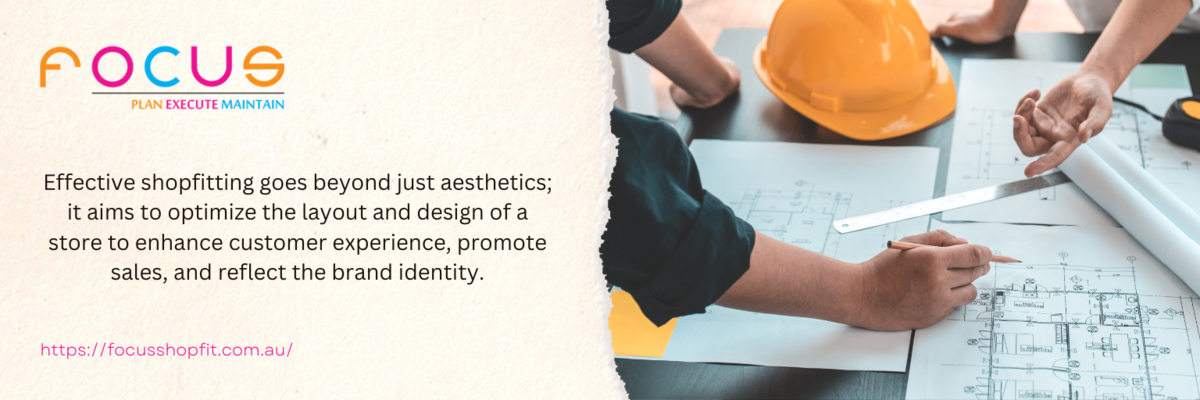
Elements of Effective Shopfitting
Effective shopfitting involves a careful consideration of various elements to create a cohesive and functional retail space. Lighting plays an essential role in setting the mood and highlighting products in your store. The use of different lighting techniques, such as ambient, accent, and task lighting, can create an inviting and visually appealing atmosphere.
Another essential element is the use of fixtures and fittings. These include shelving, display units, and racks that allow for the effective presentation of products. The shopfitter will consider factors such as product visibility, accessibility, and space optimization when designing the layout of fixtures.
The choice of materials and finishes also contributes to effective shopfitting. High-quality materials enhance the aesthetic and ensure the durability and longevity of your store. From flooring options to wall finishes, selecting materials that align with the brand and the desired shopping experience is crucial.
Shopfitting Materials and Finishes
In Australia, shopfitters have access to a wide range of materials and finishes to suit different retail concepts and budgets. Timber is a popular choice for its warm and natural appeal. It can be used for flooring, display units, and even feature walls. Metal finishes, such as stainless steel and brass, provide a modern and industrial look. They are often used for fixtures and fittings, adding a touch of sophistication to the retail space.
When it comes to flooring, options range from polished concrete for a contemporary feel to luxurious carpets for a more upscale environment. The selection of wall finishes varies from paint and wallpaper to textured panels and decorative cladding. Each material and finish choice should be carefully considered to create a cohesive and visually pleasing shopfitting design.
Shopfitting Tips for Small Businesses
Effective shopfitting is not limited to large retail chains; small businesses can also create impactful and inviting retail spaces. Here are some tips for small business owners:
- Define your brand identity: Understand your brand's values, target audience, and unique selling points. This will guide your shopfitting choices and ensure consistency throughout the store.
- Optimize the use of space: Small retail spaces require efficient use of every square foot. Consider versatile fixtures, such as modular shelving and adjustable display units, to maximize product visibility.
- Create focal points: Draw attention to key products or promotions by creating eye-catching displays or feature walls. This will capture customers' attention and encourage them to explore further.
- Pay attention to signage: Clear and well-designed signage helps customers navigate your store and find what they are looking for. Use consistent branding and legible fonts to ensure a cohesive visual identity.
- Keep it organized: A cluttered or disorganized store can deter customers. Regularly evaluate your shopfitting layout to ensure products are organized, shelves are well-stocked, and the space is tidy.
Hiring a Professional Shopfitting Company
For businesses seeking a seamless and professional shopfitting experience, it is essential to hire a reputable shopfitting company. Choose a shopfitting company with a proven track record, positive testimonials from previous clients, and a portfolio that aligns with your vision. Request detailed proposals and cost estimates from multiple companies to ensure you find the best fit for your business.
When hiring a shopfitting company, consider their expertise in retail fit-outs, knowledge of Australian regulations and standards, and ability to meet deadlines. A professional shopfitter will provide a comprehensive service, from concept design to final installation, ensuring that your retail space is transformed into a visually appealing and functional environment.

Effective shopfitting is a critical factor in the success of any retail business in Australia. It goes beyond aesthetics and aims to create a visually appealing and functional retail space that enhances the customer experience and reflects the brand identity. By understanding the importance of effective shopfitting, staying informed about the latest trends, and hiring a professional shopfitting company, businesses can create memorable and profitable retail environments. Whether you are a small business owner or part of a larger enterprise, investing in effective shopfitting is an investment in the future success of your business.
Australian Shopfitting 101: Is it Time to Hire a Shopfitter? Signs Your Retail Space Needs a Professional Touch
In today's competitive retail landscape, businesses must create an inviting and visually appealing space for their customers. One way to achieve this is by hiring a professional shopfitter. A shopfitter is a specialist who designs, plans, and installs fixtures, fittings, and displays in retail spaces. They have the expertise and knowledge to transform a dull and uninspiring store into a captivating and functional space that attracts customers. In this article, we will explore the signs that indicate your retail space needs a shopfitter, the benefits of hiring one, how to find the right shopfitter for your business, the shopfitting process, popular shopfitting trends and design ideas, costs, and budgeting tips, common shopfitting mistakes to avoid, and successful shopfitting case studies.

What is a Shopfitter and What Do They Do?
Before diving into the signs that indicate the need for a shopfitter, it is important to understand what exactly a shopfitter does. A shopfitter is a professional who specializes in the design, installation, and renovation of retail spaces. They work closely with business owners to understand their brand, target customers, and goals to create a customized space that aligns with their vision.
Shopfitters are skilled in various areas including interior design, carpentry, electrical work, plumbing, and project management. They are responsible for planning the layout of the store, sourcing and installing fixtures and fittings, ensuring compliance with building regulations, and creating a cohesive and visually appealing environment that enhances the customer experience.
Signs That Your Retail Space Needs a Shopfitter
Several signs indicate your retail space may benefit from the expertise of a shopfitter. One of the most obvious signs is if your store looks outdated and fails to attract customers. If your fixtures and fittings are old, worn out, or no longer align with your brand, it may be time for a refresh. A shopfitter can transform your space by replacing outdated fixtures with modern and functional ones that create a positive first impression on customers.
Another sign is if your store lacks organization and efficient use of space. A shopfitter can help optimize the layout of your store, ensuring that products are displayed appealingly and logically. They can create custom shelving and displays that maximize available space and make it easier for customers to navigate and find what they are looking for.
Additionally, if your store experiences frequent maintenance issues such as electrical problems or plumbing leaks, it may be a sign that the infrastructure needs attention. A shopfitter can assess the existing infrastructure and make necessary repairs or upgrades to ensure your store operates smoothly and safely.
Benefits of Hiring a Shopfitter
Hiring a shopfitter offers numerous benefits for retail businesses. Firstly, a professional shopfitter has the knowledge and experience to create a visually stunning and functional space that appeals to customers. They understand the psychology of consumer behavior and can design the layout and displays in a way that encourages browsing, engagement, and ultimately, purchases.
Secondly, a shopfitter can save business owners time and stress by managing the entire shopfitting process from start to finish. They have a network of trusted suppliers and contractors, ensuring that the project runs smoothly and on schedule. This allows business owners to focus on other aspects of their operations without the added burden of overseeing a complex renovation or installation.
Furthermore, a well-designed retail space can enhance the perceived value of products and services. Customers are more likely to perceive a business as professional, trustworthy, and of higher quality if the physical environment reflects these attributes. A shopfitter can help create a brand identity and atmosphere that resonates with your target audience, increasing customer loyalty and sales.

How to Find the Right Shopfitter for Your Business
Finding the right shopfitter for your business is crucial to the success of your shopfitting project. Here are some steps to help you find the perfect fit:
- Research and Recommendations: Start by conducting thorough research and gathering recommendations from other business owners in your industry. Look for shopfitters with a proven track record and positive reviews.
- Portfolio and Experience: Review the portfolios and previous work of potential shopfitters to ensure they have experience in projects similar to yours. This will give a general idea of the range of their design style and capabilities.
- Meetings and Interviews: Schedule meetings with shortlisted shopfitters to discuss your project in detail. Ask about their process, timelines, and any specific requirements you may have. This will help you measure the level of professionalism as well as their communication skills.
- References and Testimonials: Request references from previous clients and follow up with them to get a better understanding of the shopfitter's reliability and quality of work.
- Cost and Budget: Obtain detailed quotes from multiple shopfitters and compare them based on the scope of work, materials used, and timeline. Remember to consider both the upfront cost and the long-term value the shopfitter can bring to your business.
By following these steps and carefully evaluating your options, you can find a shopfitter who understands your vision, has the necessary expertise, and fits within your budget.
Shopfitting Mistakes to Avoid
While shopfitting can greatly benefit your retail business, there are common mistakes that can hinder the success of your project. Here are some mistakes to avoid:
- Lack of Planning: Failing to plan and define your goals before starting the shopfitting process can lead to costly changes and delays. Take the time to thoroughly plan and communicate your vision to the shopfitter.
- Ignoring Regulations: Ensure that your shopfitting project complies with local building regulations, fire safety codes, and accessibility standards. Failure to do so can result in fines, delays, or even closure of your business.
- Poor Lighting: Inadequate or poorly placed lighting can negatively impact the overall ambiance and visibility of your products. Invest in proper lighting design to enhance the aesthetics and functionality of your space.
- Overlooking Maintenance: Plan for regular maintenance and upkeep of your shopfitting installations. Ignoring maintenance can lead to premature wear and tear, compromising the functionality and appearance of your retail space.
- Ignoring Customer Feedback: Listen to your customers and take their feedback into account when designing or renovating your retail space. They are the ones who will ultimately determine the success of your shopfitting project.
By avoiding these common mistakes and working closely with your shopfitter, you can ensure a smooth and successful shopfitting project that maximizes the potential of your retail space.
Making the Decision to Hire a Shopfitter
Hiring a shopfitter can greatly enhance the success of your retail business by creating an inviting and functional space that attracts customers. By recognizing the signs that indicate the need for a shopfitter, understanding the benefits they offer, and following the steps to find the right shopfitter for your business, you can embark on a shopfitting project that transforms your retail space into a thriving environment.

Remember to consider shopfitting trends and design ideas, carefully manage your budget, and avoid common mistakes to ensure a successful outcome. By working closely with your shopfitter and incorporating their expertise, you can create a memorable shopping experience for your customers and increase your chances of long-term success in the competitive retail industry.
Building Success: How Australian Shopfitting Services Can Transform Your Business
Shopfitting is a crucial aspect of any business, as it involves designing and organizing the interior of a retail space to create an appealing and functional environment for customers. In Australia, the shopfitting industry has evolved significantly over the years, offering a wide range of services to businesses across various sectors. Australian shopfitting services have gained recognition for their expertise, professionalism, and ability to transform businesses into thriving success stories.

The Importance of Shopfitting for Businesses
Shopfitting plays a vital role in the success of a business. When customers step into a retail space, they form an impression within seconds. Australian shopfitting services understand this and work diligently to create an environment that reflects the brand's identity, attracts customers, and enhances the overall shopping experience. A well-designed shopfitting can significantly impact a business's sales, customer satisfaction, and brand reputation.
A professionally designed and executed shopfitting communicates a sense of trust, professionalism, and attention to detail, which can help businesses stand out from their competitors. From the layout and placement of merchandise to lighting, signage, and even the choice of materials, every aspect of shopfitting is carefully curated to create a cohesive and visually appealing space that engages customers and encourages them to explore more.
Benefits of Hiring Australian Shopfitting Services
Engaging Australian shopfitting services can provide numerous benefits for businesses. Firstly, these services have a deep understanding of the Australian market and can tailor the shopfitting design to suit local preferences and trends. By staying updated with the latest industry standards and design practices, Australian shopfitters can ensure that businesses stay ahead of the curve and provide customers with a modern and visually appealing shopping experience.
Australian shopfitting services often have a network of reliable suppliers, contractors, and tradespeople who can assist in the shopfitting process. This ensures that businesses receive high-quality materials, craftsmanship, and timely execution of the project. With their expertise and experience, Australian shopfitters can also offer valuable advice and insights, helping businesses make informed decisions about design, layout, and overall functionality.
How Australian Shopfitting Services Can Transform Your Business
Australian shopfitting services have the potential to transform businesses in various ways. Firstly, a well-executed shopfitting can optimize the use of available space, ensuring that every inch is utilized effectively. By strategically placing shelves, displays, and fixtures, shopfitters can enhance product visibility, encourage customer flow, and maximize sales potential. This can lead to increased revenue and improved overall business performance.
Moreover, Australian shopfitting services focus on creating a cohesive and immersive brand experience. By incorporating brand elements, colors, and themes into the shopfitting design, businesses can reinforce their brand identity and create a memorable impression on customers. This not only helps in building brand loyalty but also increases the chances of customers recommending the business to others.
Additionally, they can enhance the functionality of a retail space. Australian shopfitters consider factors such as customer comfort, accessibility, and safety to create an environment that is easy to navigate and enjoyable to spend time in. A well-designed shopfitting can also improve staff efficiency by providing them with ergonomic workstations, storage solutions, and an organized layout, resulting in improved productivity and customer service.

The Process of Shopfitting
The shopfitting process typically involves several stages, starting with an initial consultation and assessment of the business's requirements and objectives. Australian shopfitters collaborate closely with businesses to understand their brand vision, target audience, and budget constraints. This information guides the shopfitters in creating a customized plan and design proposal that aligns with the business's goals.
Once the design is finalized, the shopfitting team begins the execution phase, which includes procuring materials, coordinating with contractors, and overseeing the construction and installation process. These shopfitting services ensure that the project is completed within the agreed timelines, adhering to quality standards and regulatory requirements. Throughout the process, open communication channels are maintained to keep businesses informed about the progress and address any concerns.
After the construction is complete, Australian shopfitting services conduct thorough inspections and quality checks to ensure that everything is functioning as intended. They also provide after-sales support and maintenance services, ensuring that businesses can rely on their shopfitting for the long term.
Factors to Consider When Choosing Australian Shopfitting Services
When selecting shopfitting services, businesses should consider several factors to make an informed decision. Firstly, it is essential to assess the experience and expertise of the shopfitting company. A reputable Australian shopfitting service will have a portfolio of successful projects, testimonials, and industry certifications that demonstrate their capabilities.
It is also crucial to consider the shopfitting company's ability to understand and align with the business's brand identity and values. Clear communication and collaboration are very important factors for success in shopfitting. Businesses should also evaluate the shopfitting company's ability to work within the given budget and timeline, ensuring that there are no unexpected delays or cost overruns.
Furthermore, businesses should inquire about the shopfitting company's knowledge of industry trends, regulations, and sustainability practices. Adhering to environmental standards and incorporating sustainable materials and practices can not only benefit the planet but also enhance a business's reputation and appeal to environmentally conscious customers.

Why Australian Shopfitting Services Are Essential for Business Success
Australian shopfitting services have proven to be instrumental in transforming businesses and driving success. From creating visually appealing spaces that attract customers to optimizing functionality and enhancing the brand experience, their expertise and attention to detail can take a business to new heights. By choosing the right Australian shopfitting service and investing in a well-designed shopfitting, businesses can significantly improve sales, customer satisfaction, and overall brand reputation. So, whether you are starting a new business or looking to revamp your existing retail space, consider the invaluable contributions of shopfitting services and unlock the full potential of your business.
Stay Ahead of the Curve: Top Shopfitting Trends to Watch in 2024
As the retail industry continues to evolve, shopfitting plays a crucial role in creating inviting and immersive spaces for customers. To stay ahead of the curve and remain competitive in the ever-changing landscape, retailers need to be aware of the latest trends in shopfitting. In this article, we will explore the top shopfitting trends to watch in 2024, from sustainable solutions to the integration of technology and the rise of personalized experiences. By embracing these trends, retailers can create unique and memorable retail environments that captivate their customers.

- Sustainable Shopfitting Solutions
In 2024, sustainability will be at the forefront of shopfitting trends. Consumers are becoming increasingly conscious of their environmental impact, and they expect retailers to do the same. Retailers can incorporate sustainable practices into their shopfitting designs by opting for eco-friendly materials, such as reclaimed wood or recycled plastics. Additionally, energy-efficient lighting solutions and smart HVAC systems can help reduce the store's carbon footprint. By embracing sustainability in their shopfitting choices, retailers not only contribute to a greener future but also attract environmentally-conscious customers.
Furthermore, retailers can explore innovative ideas such as incorporating living walls or vertical gardens into their shopfitting designs. These green features not only add aesthetic appeal but also improve air quality and create a calming atmosphere. Investing in renewable energy sources, such as solar panels, can also be a step towards achieving sustainability goals in shopfitting. By adopting sustainable shopfitting solutions, retailers can align their brands with the growing demand for eco-friendly practices and create a positive impact on the environment.
- Technology in Shopfitting
In the digital age, technology plays a crucial role in enhancing the customer experience. In 2024, we can expect to see a rise in the integration of technology in shopfitting. From interactive displays to smart mirrors and self-checkout systems, technology will create a seamless and personalized shopping experience for customers. For instance, augmented reality (AR) and virtual reality (VR) can be utilized to allow customers to visualize products in their own space or try on virtual outfits. This technology not only saves time but also enhances customer engagement and satisfaction.
Moreover, the use of smart shelves and RFID tags can provide real-time inventory updates, ensuring that products are always available to customers. Retailers can also utilize data analytics to gain valuable insights into customer behavior and preferences, allowing them to tailor their shopfitting designs and product offerings accordingly. By embracing technology in shopfitting, retailers can create a modern and efficient shopping environment that meets the expectations of tech-savvy customers.
- Multi-functional and Flexible Shopfitting Designs
In 2024, shopfitting designs will focus on maximizing space and flexibility. Retailers need to adapt to changing consumer needs and create versatile environments that can be easily transformed. This can be achieved through the use of modular fixtures and movable walls that can be adjusted to accommodate different product displays or events. By creating flexible spaces, retailers can easily refresh their store layouts and adapt to seasonal trends or new product launches.
Additionally, multi-functional shopfitting designs that serve dual purposes will gain popularity. For example, a display table that doubles as a charging station for customers' electronic devices or seating areas that can be transformed into pop-up shops. These innovative designs not only optimize space but also provide added convenience and value to customers. By embracing multi-functional and flexible shopfitting designs, retailers can create dynamic and adaptable spaces that cater to the ever-changing retail landscape.

- Integration of Online and Offline Shopping Experiences
With the rise of e-commerce, the integration of online and offline shopping experiences has become essential for retailers. In 2024, we can expect to see more seamless integration between physical stores and digital platforms. Retailers can incorporate interactive touch screens or kiosks where customers can browse and purchase products that may not be available in-store. This integration allows customers to enjoy the convenience of online shopping while still benefiting from the tactile experience of a physical store.
Additionally, click-and-collect services will become more prevalent, allowing customers to order online and pick up in-store. This not only drives foot traffic to brick-and-mortar locations but also provides an opportunity for retailers to upsell and cross-sell products. Integration of online and offline shopping experiences also opens up possibilities for personalized recommendations and targeted marketing campaigns based on customer data. By embracing this trend, retailers can create a seamless and cohesive shopping experience that bridges the gap between their online and offline presence.
- Personalization and Customization in Shopfitting
In 2024, personalization and customization will continue to be important factors in shopfitting. Customers crave unique experiences and products that reflect their individuality. Retailers can cater to this demand by offering personalized shopping experiences through the use of technology and data analysis. For example, interactive displays can recommend products based on customers' preferences or previous purchases, creating a tailored shopping experience.
Moreover, customization options will become more prevalent, allowing customers to personalize products or choose from a variety of options. This can include customizing the color, material, or features of a product. By offering customization, retailers not only meet customers' desire for uniqueness but also create a sense of ownership and connection to the brand. Personalization and customization in shopfitting allow retailers to differentiate themselves from the competition and create a loyal customer base.
- Creating Immersive and Experiential Retail Spaces
In 2024, creating immersive and experiential retail spaces will continue to be a top trend in shopfitting. Customers seek memorable and engaging experiences that go beyond traditional shopping. Retailers can create immersive environments by incorporating elements such as sound, lighting, and interactive displays. For example, a clothing store can utilize ambient lighting and curated playlists to create a unique atmosphere that reflects the brand's identity.
Furthermore, pop-up shops and temporary installations will gain popularity, providing customers with limited-time experiences and exclusive products. Retailers can also host events or workshops within their stores to engage with customers and build a sense of community. By creating immersive and experiential retail spaces, retailers can create a lasting impression on customers, drive foot traffic, and encourage social sharing, ultimately increasing brand awareness and loyalty.
Embracing the Future of Shopfitting
Staying ahead of the curve in shopfitting is crucial for retailers to thrive in the ever-evolving retail industry. By embracing sustainable solutions, integrating technology, creating multi-functional designs, bridging the gap between online and offline experiences, offering personalization and customization, and creating immersive retail spaces, retailers can create unique and captivating environments that resonate with customers.

As we look towards 2024, it's clear that shopfitting will continue to play a vital role in shaping the retail landscape. By keeping a pulse on the latest trends and incorporating them into their shopfitting strategies, retailers can stay ahead of the curve and provide exceptional shopping experiences for their customers.
Ready for 2024: The Power of Store Renovation and Shopfitting in Revitalizing Your Retail Business
In the fast-paced world of retail, staying relevant and enticing customers is crucial for success. One way to achieve this is through store renovation. Store renovation is not only about giving your store a fresh look, but it also has the power to revitalize your retail business in multiple ways.
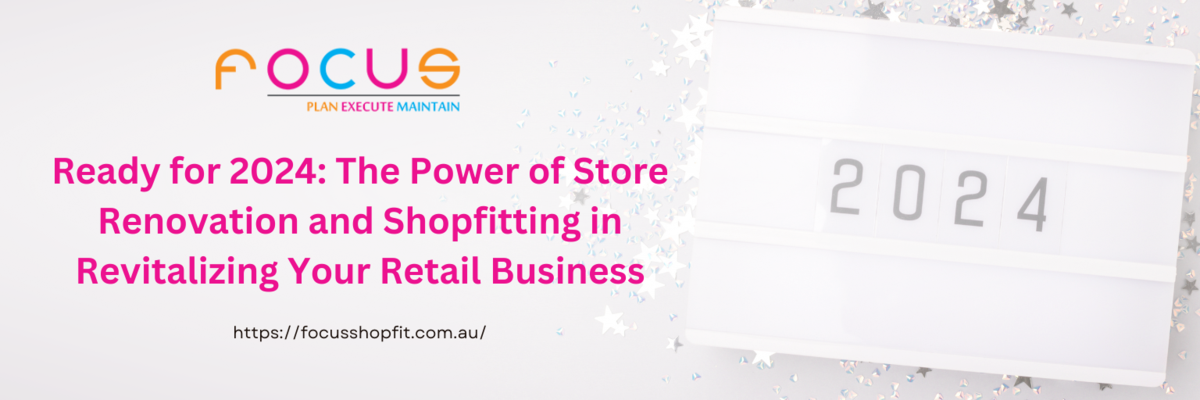
Store renovation can improve the overall customer experience. Outdated and worn-out stores can leave customers with a negative impression, making them less likely to return or recommend your business to others. By investing in store renovation, you can create a visually appealing and inviting space that attracts customers and encourages them to spend more time exploring your products.
Renovation can enhance your brand image. A well-designed store that aligns with your brand identity can communicate your values and unique selling propositions effectively. It can help establish a positive perception of your business in the minds of your customers, making them more likely to trust your products and services.
Furthermore, a store makeover can optimize your store layout for better functionality. As consumer behaviors and preferences evolve, it's important to adapt your store's layout to accommodate these changes. By re-evaluating the flow of your store, you can optimize product placement, create designated areas for different product categories, and improve navigation for customers. This can lead to increased sales and improved customer satisfaction.
Benefits of Store Renovation
Store renovation offers numerous benefits for retail businesses. Apart from the improvements in customer experience, brand image, and store layout, there are other advantages worth considering.
One significant benefit is increased foot traffic. A newly renovated store often attracts curious customers who want to see the changes and experience the improved environment. This surge in foot traffic can translate into higher sales and increased brand visibility, especially if you promote your store renovation through marketing efforts.
Store renovation also provides an opportunity to incorporate new technologies. As the retail industry becomes more digitized, integrating technology into your store can enhance the shopping experience and streamline operations. For example, interactive displays, self-checkout systems, and personalized digital signage can all be implemented during a store renovation to create a seamless and modern shopping environment.
Additionally, store renovation can boost employee morale and productivity. A well-designed and updated store can create a more positive and inspiring work environment for your staff. This can lead to increased job satisfaction, improved customer service, and ultimately, better business performance.
Store Renovation Statistics
The impact of store renovation on retail businesses is supported by various statistics. According to a study conducted by the National Retail Federation, 42% of consumers are more likely to shop at a store that has been recently renovated or updated. Additionally, the Retail Design Institute found that store renovations can result in a 25% increase in sales. These statistics highlight the significance of store renovation in attracting customers and driving revenue.
Furthermore, a survey conducted by Retail TouchPoints revealed that 77% of retailers believe that store renovation positively impacts brand perception, while 71% stated that it improves customer satisfaction. These findings emphasize the importance of store renovation in creating a positive brand image and enhancing the overall shopping experience.
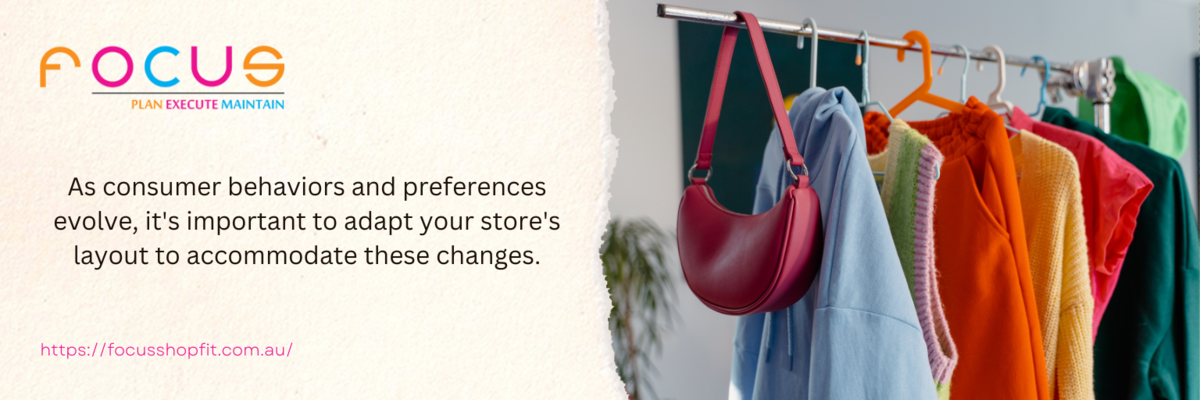
Assessing the Need for Store Renovation
Before embarking on a store renovation project, it's important to assess the need for renovation and identify areas that require improvement. One way to do this is by conducting a thorough evaluation of your current store. Look for signs of wear and tear, outdated fixtures, and any elements that may hinder the customer experience.
Additionally, gather feedback from your customers. Conduct surveys or engage in conversations to understand their perceptions of your store. Identify areas where they feel improvements are needed, such as lighting, layout, or product displays. This feedback can provide valuable insights into the specific areas that should be addressed during the renovation process.
Furthermore, analyze your sales data and compare it to industry benchmarks. If you notice a decline in sales or struggle to meet your targets, it may be an indication that your store needs a refresh. A well-executed store renovation can help attract new customers, re-engage existing ones, and ultimately drive sales.
Planning Your Store Renovation
Planning is a crucial step in ensuring a successful store renovation. Start by setting clear goals and objectives for the project. Determine what you want to achieve through the renovation, whether it's improving the store's aesthetics, enhancing functionality, or aligning with a rebranding strategy.
Next, create a detailed timeline and budget for the renovation. Set realistic deadlines and allocate resources accordingly. Consider factors such as permits, construction time, and potential disruptions to your business operations. It's important to plan for contingencies and allow for flexibility in case unexpected issues arise.
During the planning phase, also consider the impact of the renovation on your customers. Communicate the upcoming changes to your loyal customers through various channels, such as email newsletters, social media, and in-store signage. Provide them with information about the benefits they can expect from the renovation and any temporary inconveniences they may experience.
Hiring a Shopfitting Company
To ensure a successful store renovation, it's advisable to hire a professional shopfitting company. Shopfitting companies specialize in designing and renovating retail spaces, and they have the expertise and experience to transform your store into a captivating and functional environment.
When selecting a shopfitting company, consider its reputation, portfolio, and track record. Look for companies that have worked on similar projects in the past and have a proven record of delivering high-quality results. Request references and testimonials from their previous clients to gain insights into their level of professionalism and customer satisfaction.
Collaborate closely with the shopfitting company throughout the renovation process. Communicate your goals and expectations, and provide them with any specific requirements or design preferences. Regularly review their progress and provide feedback to ensure that the renovation aligns with your vision.
Budgeting for Store Makeover
Store renovation can be a significant investment, so it's important to budget wisely. Start by assessing your available funds and determining how much you can allocate to the renovation project. Consider factors such as construction costs, shopfitting fees, permits, and any additional expenses, such as new fixtures or equipment.
It's also essential to factor in potential return on investment (ROI). While store renovation can be costly upfront, it can lead to increased sales and customer loyalty in the long run. Analyze your sales data and projections to estimate the potential ROI and determine the maximum budget you can allocate without negatively impacting your business's financial stability.
To optimize your budget, prioritize the areas that will have the greatest impact on your store's overall appeal and functionality. Focus on essential renovations first, such as improving lighting, enhancing store layout, or replacing worn-out fixtures. You can always allocate a portion of your budget to aesthetic upgrades or additional features once the essential renovations are complete.

Revitalizing your Business
Store renovation is a powerful tool for revitalizing your retail business. By improving the customer experience, enhancing your brand image, and optimizing your store layout, you can attract more customers, increase sales, and stay ahead of the competition.
When planning a store renovation, carefully assess the need for renovation, set clear goals, and create a detailed budget and timeline. Consider hiring a professional shopfitting company to ensure a successful outcome. Stay updated with the latest store renovation trends and ideas to create a truly captivating and modern shopping environment.
Remember to prioritize functionality, avoid common renovation mistakes, and maintain brand consistency throughout the process. By investing in store renovation, you can transform your outdated store into a dazzling space that captivates customers and brings new life to your retail business.
New Year, New Shopfitting Ideas for your Store
Shopfitting is the process of designing and fitting out retail stores to create an attractive and functional space for customers. It involves everything from the layout and design of the store to the installation of fixtures and fittings. Shopfitting plays a crucial role in the success of a retail business as it directly impacts the customer's experience and perception of the brand. By carefully planning and implementing shopfitting ideas, store owners can create a unique and inviting environment that sets them apart from the competition.

Stay ahead of the competition with these trendy shopfitting ideas for your store
In today's highly competitive retail industry, staying ahead of the competition is essential for the success of any business. With consumers having more options than ever before, retailers must find ways to differentiate themselves and attract customers. One way to do this is through innovative shopfitting ideas. By incorporating the latest trends and technologies into their store design, retailers can create a shopping experience that is both memorable and immersive, leaving a lasting impression on their customers.
Shopfitting trends for the new year
As the new year approaches, it's time for retailers to start thinking about how they can update their store designs to stay ahead of the competition. Here are some trendy shopfitting ideas to consider:
- Incorporating technology into your shopfitting design
Technology has become an integral part of our lives, and it's no different when it comes to retail. Incorporating technology into your shopfitting design can enhance the customer's shopping experience and make it more interactive and engaging. For example, you could install digital signage displays that showcase your products and promotions in a dynamic and eye-catching way. You could also consider implementing virtual reality or augmented reality experiences to allow customers to try on clothing or visualize how furniture would look in their homes virtually.
- Creating a memorable and immersive shopping experience
In today's fast-paced world, consumers are looking for more than just a place to buy products. They want an experience. Creating a memorable and immersive shopping experience can help you stand out from the competition and attract loyal customers. Consider incorporating elements such as sensory branding, where you use scents, sounds, and textures to create a unique atmosphere in your store. You could also create interactive product displays or offer personalized shopping experiences to make your customers feel special and valued.
- Utilizing sustainable and eco-friendly shopfitting materials
With increasing awareness about environmental issues, consumers are becoming more conscious of their purchasing decisions. By utilizing sustainable and eco-friendly shopfitting materials, you can appeal to this growing market segment and differentiate yourself from competitors. Consider using materials such as reclaimed wood, recycled plastic, or eco-friendly lighting options. Not only will this help reduce your store's carbon footprint, but it will also show your customers that you care about the environment.
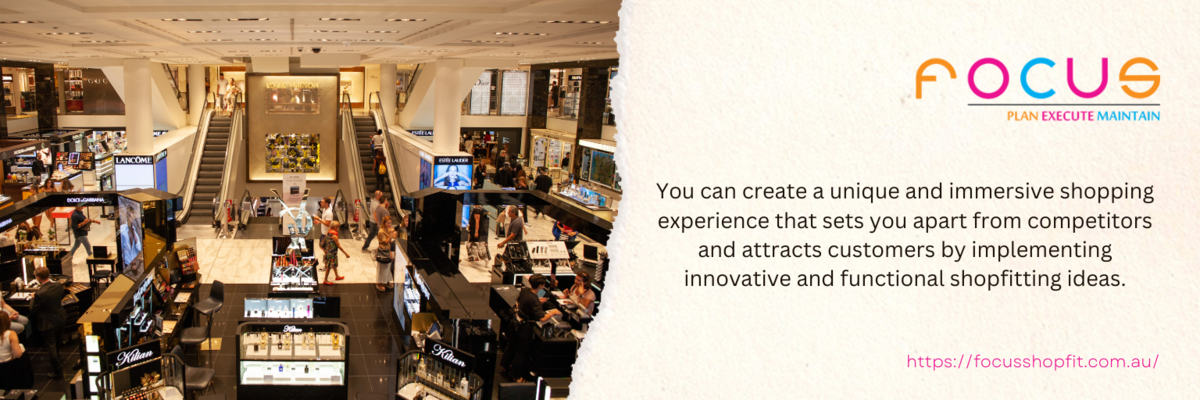
The impact of visual merchandising in shopfitting
Visual merchandising is a critical component of shopfitting that focuses on how products are displayed and presented in-store. It involves arranging products in an aesthetically pleasing and strategic way to attract customers and encourage them to make a purchase. The way you present your products can greatly impact your store's sales and overall success. Consider using eye-catching displays, strategic lighting, and creative signage to draw attention to your products and create a visually appealing shopping environment.
Collaborating with shopfitting professionals for innovative ideas
While it's possible to come up with shopfitting ideas on your own, collaborating with shopfitting professionals can help bring your vision to life and ensure that your store design is both functional and aesthetically pleasing. Shopfitting professionals have the expertise and experience to guide you through the design process, offer innovative ideas, and help you make informed decisions. By working with professionals, you can save time and avoid costly mistakes, ultimately leading to a more successful and profitable store.

Implementing trendy shopfitting ideas for a successful retail store in the new year
In the ever-evolving retail industry, staying ahead of the competition is crucial for the success of your store. By implementing trendy shopfitting ideas, you can create a unique and immersive shopping experience that sets you apart from competitors and attracts customers. From incorporating technology to utilizing sustainable materials and focusing on visual merchandising, there are countless ways to enhance your store design and stay ahead in the new year. Remember to collaborate with shopfitting professionals for innovative ideas and look to successful case studies for inspiration. By staying ahead of the competition, you can ensure the success and growth of your retail business in the new year and beyond.
Planning Store Renovation and Shopfitting for the New Year
Store renovation and shopfitting are crucial aspects of keeping a retail business fresh, appealing, and competitive. As the new year approaches, it is the perfect time to assess your store's current condition and plan for necessary changes and improvements. Store renovation involves updating the physical space, while shopfitting focuses on ensuring that the store layout, fixtures, and displays are optimized for customer experience and sales. By investing time and resources into planning store renovation and shopfitting, businesses can create a welcoming and attractive environment that drives customer engagement and boosts sales.

First and foremost, store renovation and shopfitting help businesses stay relevant in an ever-evolving market. Consumer preferences, trends, and technology are constantly changing, and retailers need to adapt accordingly. Outdated store layouts, worn-out fixtures, and uninspiring designs can lead to a decline in foot traffic and sales. By planning store renovation and shopfitting, businesses can revitalize their image, attract new customers, and retain existing ones. A fresh and modern store design can create a positive impression, enhance the overall shopping experience, and differentiate the business from competitors.
Additionally, store renovation and shopfitting offer opportunities to optimize the use of space and improve operational efficiency. Over time, a store's layout may become inefficient, hindering staff productivity and customer flow. By reevaluating the store's layout during the planning phase, businesses can identify bottlenecks, eliminate wasted space, and create a more streamlined and organized environment. This can lead to improved customer service, easier navigation for shoppers, and better utilization of available square footage.
Benefits of Planning Store Renovation
Proper planning is the cornerstone of a successful store renovation and shopfitting project. By taking the time to carefully consider all aspects of the project, businesses can reap numerous benefits. One of the key advantages of planning is cost control. Without a well-thought-out plan, store renovation and shopfitting projects can easily exceed budgetary constraints. By thoroughly assessing the scope of work, creating a detailed budget, and obtaining multiple quotes from contractors and suppliers, businesses can ensure that the project remains within financial limits. Planning also allows businesses to prioritize renovation tasks based on urgency and available resources, preventing unnecessary expenses and delays.
Another benefit of planning is the ability to minimize disruption to daily operations. Store renovation and shopfitting can be disruptive to both staff and customers, potentially leading to a temporary decrease in sales. By carefully scheduling the project and coordinating with contractors, businesses can mitigate the impact on day-to-day operations. For example, certain renovation tasks can be carried out during off-peak hours or temporary store closures. By planning the project timeline strategically, businesses can minimize inconvenience and maintain customer satisfaction.
Factors to Consider Before Starting a Store Renovation Project
Before embarking on a store renovation and shopfitting project, it is essential to consider several factors that can significantly impact the outcome and success of the project. First and foremost, businesses should have a clear understanding of their goals and objectives for the renovation. Are they aiming to increase foot traffic, improve customer experience, or enhance brand image? By defining these objectives beforehand, businesses can align their renovation plans accordingly and make informed decisions throughout the project.
Budget is another critical factor to consider. Renovation projects can vary widely in cost, depending on the scale and complexity of the changes. It is essential to establish a realistic budget and allocate funds for different aspects of the renovation, including construction, fixtures, materials, and professional services. By accurately estimating costs and setting a budget, businesses can avoid overspending or compromising the quality of the renovation.
Additionally, businesses should consider the impact of the renovation on their staff and customers. Will the store need to be temporarily closed? How will the renovation affect employee schedules and workspaces? By anticipating these potential disruptions and communicating with staff and customers in advance, businesses can minimize inconvenience and maintain a positive relationship with their stakeholders.
Creating a Budget for Store Renovation and Shopfitting
Creating a budget is a crucial step in the planning process for store renovation and shopfitting. A well-defined budget helps businesses allocate resources effectively, prioritize tasks, and control costs throughout the project.
To create a budget, businesses should start by conducting thorough research on the estimated costs of various renovation elements. This includes construction, fixtures, materials, permits, and professional services. It is essential to obtain multiple quotes from contractors and suppliers to ensure accurate pricing information.
Next, businesses should consider any additional expenses that may arise during the renovation process. These can include unexpected repairs, change orders, or modifications to the original plan. By setting aside a contingency fund, businesses can protect themselves from unforeseen costs and keep the project on track.
Once all the costs have been identified, businesses should allocate specific amounts to each aspect of the renovation. This includes categorizing expenses such as demolition, electrical work, plumbing, flooring, painting, fixtures, and professional fees. By breaking down the budget into detailed categories, businesses can better track expenses, identify areas where cost savings can be made, and make informed decisions throughout the project.
It is crucial to regularly review and update the budget as the renovation progresses. Unexpected expenses may arise, and adjustments may need to be made along the way. By closely monitoring the budget and comparing actual costs against the estimated amounts, businesses can ensure that the project remains within financial constraints.
Hiring Professionals for Store Renovation and Shopfitting
Store renovation and shopfitting projects often require the expertise of professionals to ensure a successful outcome. Hiring professionals can save time, minimize costly mistakes, and ensure their project meets all relevant regulations and standards.
One of the key professionals to consider is an architect or interior designer. These professionals have the knowledge and experience to create a functional and visually appealing store layout. They can analyze the store space, understand customer flow, and design a layout that optimizes sales and enhances the overall shopping experience. An architect or interior designer can also provide valuable insights on the selection of materials, fixtures, and finishes that align with the store's brand image and target market.
Contractors and construction professionals are essential for executing the physical aspects of the renovation. They have the skills and expertise to carry out tasks like demolition, carpentry, electrical work, plumbing, and painting. Hiring licensed and reputable contractors ensures the renovation is done safely, adhering to all building codes and regulations. It is important to obtain multiple quotes and thoroughly vet potential contractors to ensure a high level of quality and professionalism.
In addition to architects and contractors, businesses may also need the services of specialized professionals, such as lighting designers, signage experts, and audiovisual technicians. These professionals can help create a cohesive and engaging store environment that enhances the customer experience and effectively showcases products.
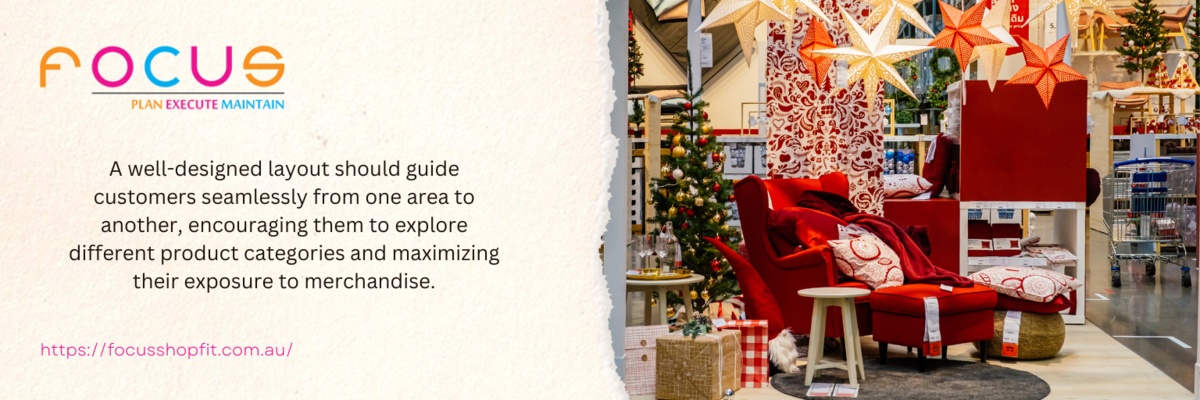
Store Layout and Design Considerations
The layout and design of a store play a significant role in attracting customers, encouraging exploration, and influencing purchasing decisions. When planning store renovation and shopfitting, businesses should carefully consider various layout and design elements to create an inviting and functional space.
One important consideration is the flow of customer traffic within the store. A well-designed layout should guide customers seamlessly from one area to another, encouraging them to explore different product categories and maximizing their exposure to merchandise. The layout should also consider factors such as customer behavior, natural pathways, and the positioning of high-margin products or promotional displays.
Another crucial aspect is creating focal points and visual merchandising displays that capture customers' attention. Focal points can be created through the strategic placement of eye-catching fixtures, displays, or product showcases. These focal points should be positioned in areas of high customer traffic and should reflect the store's brand image and desired atmosphere. Visual merchandising displays should be regularly refreshed to maintain customer interest and highlight new products or promotions.
Lighting is another vital consideration in store layout and design. Adequate lighting can enhance the visibility and appeal of merchandise, create a welcoming ambiance, and guide customers through different areas of the store. A combination of general lighting, accent lighting, and task lighting should be used to create a balanced and visually appealing environment.
Businesses should consider the store's overall aesthetic and branding. The design elements, color scheme, and signage should align with the store's target market and brand identity. Consistency in design across all areas of the store creates a cohesive and memorable experience for customers.
Selecting the Right Materials and Fixtures for Shopfitting
Choosing the right materials and fixtures is crucial in achieving an attractive and functional store environment. During the planning phase of store renovation and shopfitting, businesses should carefully consider the following factors when selecting materials and fixtures.
Durability is a key consideration, especially for high-traffic areas or areas prone to wear and tear. Materials such as commercial-grade flooring, durable wall finishes, and scratch-resistant fixtures should be chosen to ensure longevity and minimize maintenance costs. Fixtures should also be sturdy and able to withstand frequent use and handling.
Aesthetics and brand identity should also guide the selection of materials and fixtures. The chosen materials should reflect the desired store atmosphere and brand image. For example, a high-end boutique may opt for luxurious materials such as marble or hardwood, while a casual clothing store may choose more affordable and contemporary materials.
Sustainability is an increasingly important consideration for many businesses. By opting for eco-friendly materials and fixtures, businesses can demonstrate their commitment to environmental responsibility and appeal to environmentally conscious customers. Sustainable options include recycled materials, low-VOC paints, energy-efficient lighting, and fixtures made from renewable resources.
Functionality is another critical factor to consider. Fixtures and materials should be chosen based on their intended purpose and the specific needs of the store. For example, clothing racks should be designed to accommodate different types of garments and maximize display space. Shelving units and storage solutions should be selected to optimize organization and accessibility.
Lastly, cost is an important consideration, especially for businesses with limited budgets. While it is essential to prioritize quality and durability, businesses should also seek cost-effective options that offer good value for money. Comparing prices, obtaining multiple quotes, and considering the long-term maintenance costs of materials and fixtures can help businesses make informed decisions and stay within budget.
Timeline and Project Management for Store Renovation
A well-defined timeline and effective project management are essential for the successful execution of store renovation and shopfitting projects. By carefully planning and coordinating all tasks, businesses can ensure that the project stays on schedule and minimize disruption to operations.
The first step in creating a timeline is to identify the key milestones and deadlines for the project. This includes determining the start and end dates, as well as any interim deadlines for specific tasks or phases. Businesses should consider factors such as the availability of contractors, delivery times for materials, and any time-sensitive events or promotions.
Once the milestones and deadlines are established, businesses should create a detailed project schedule. This schedule should outline all tasks, their dependencies, and the estimated duration for each task. It is important to consider potential delays or unexpected challenges that may arise during the renovation process. By building in buffer time, businesses can mitigate the impact of these unforeseen circumstances and maintain the project timeline.
Effective project management involves coordinating and communicating with all stakeholders involved in the renovation. This includes architects, contractors, suppliers, and staff members. Regular meetings should be scheduled to review progress, discuss any issues or concerns, and make necessary adjustments to the plan. Clear lines of communication should be established, and responsibilities and expectations should be clearly defined for all parties involved.
Throughout the project, it is crucial to monitor progress against the timeline and make adjustments as needed. Delays or unexpected challenges should be addressed promptly to prevent further disruptions. By staying proactive and maintaining open lines of communication, businesses can ensure that the renovation project stays on track and is completed within the established timeline.
Tips for a Successful Store Renovation and Shopfitting Process
Store renovation and shopfitting projects can be complex and challenging, but with careful planning and execution, businesses can achieve a successful outcome. Here are some tips to ensure a smooth and efficient renovation process:
Start with a clear vision: Define your goals and objectives for the renovation and communicate them to all stakeholders. This will guide decision-making and ensure alignment throughout the project.
Assemble a strong team: Hire experienced professionals who specialize in store renovation and shopfitting. Their expertise will help navigate challenges and ensure a high-quality outcome.
Communicate with stakeholders: Keep staff, customers, and suppliers informed about the renovation plans and any disruptions that may occur. Maintain open lines of communication to discuss and resolve any concerns or questions.
Plan for contingencies: Set aside a contingency fund and build buffer time into the project timeline to account for unexpected delays or challenges.
Regularly review progress: Monitor the project against the timeline and budget, and make adjustments as needed. Regularly communicate with the project team to address any issues or concerns.
Consider customer experience: Keep the needs and preferences of your target customers in mind when making design and layout decisions. Focus on creating a welcoming and engaging environment that enhances the shopping experience.
Prioritize safety: Ensure that all renovation work is carried out safely and in compliance with building codes and regulations. Regularly inspect the work site and address any safety concerns promptly.
Maintain a clean and organized work environment: A clean and organized work site promotes efficiency and professionalism. Regularly clean up debris, organize tools and materials, and ensure that the work site is safe and accessible.
Plan for reopening: Develop a marketing and promotional plan to generate excitement and drive foot traffic when the store reopens. Consider hosting a grand reopening event or offering special discounts to attract customers.
Evaluate and learn from the experience: Once the renovation is complete, evaluate the results and gather feedback from staff and customers. Identify areas for improvement and apply these lessons to future renovation projects.
By following these tips and investing in careful planning and execution, businesses can ensure a successful store renovation and shopfitting process that leads to a more attractive and profitable retail environment.

Store Renovation and Shopfitting for Business Success
Store renovation and shopfitting are essential for businesses to stay competitive in a rapidly changing retail landscape. By investing in store renovation and shopfitting, businesses can revitalize their image, attract new customers, and improve operational efficiency. A well-planned renovation project can enhance the overall shopping experience, drive customer engagement, and ultimately increase sales. Through careful planning, communication, and execution, businesses can create a welcoming and attractive store environment.

